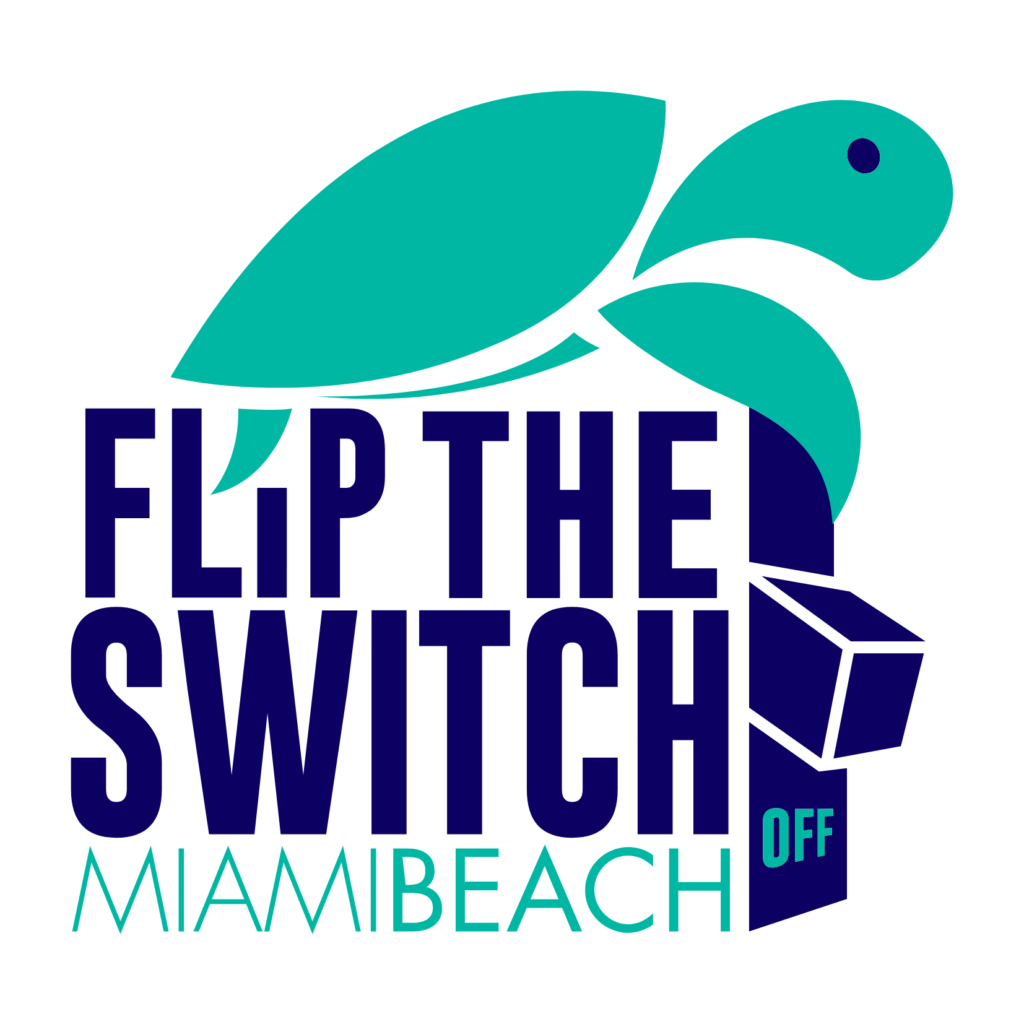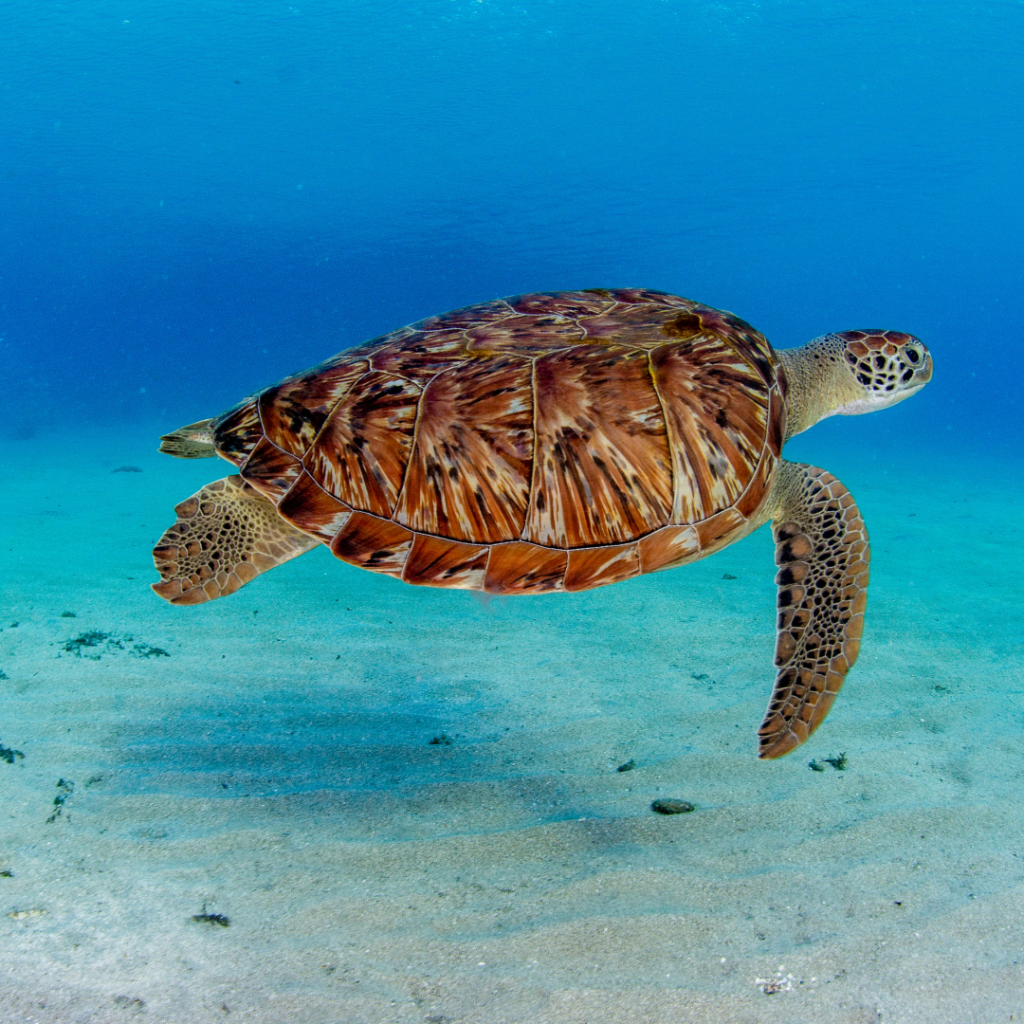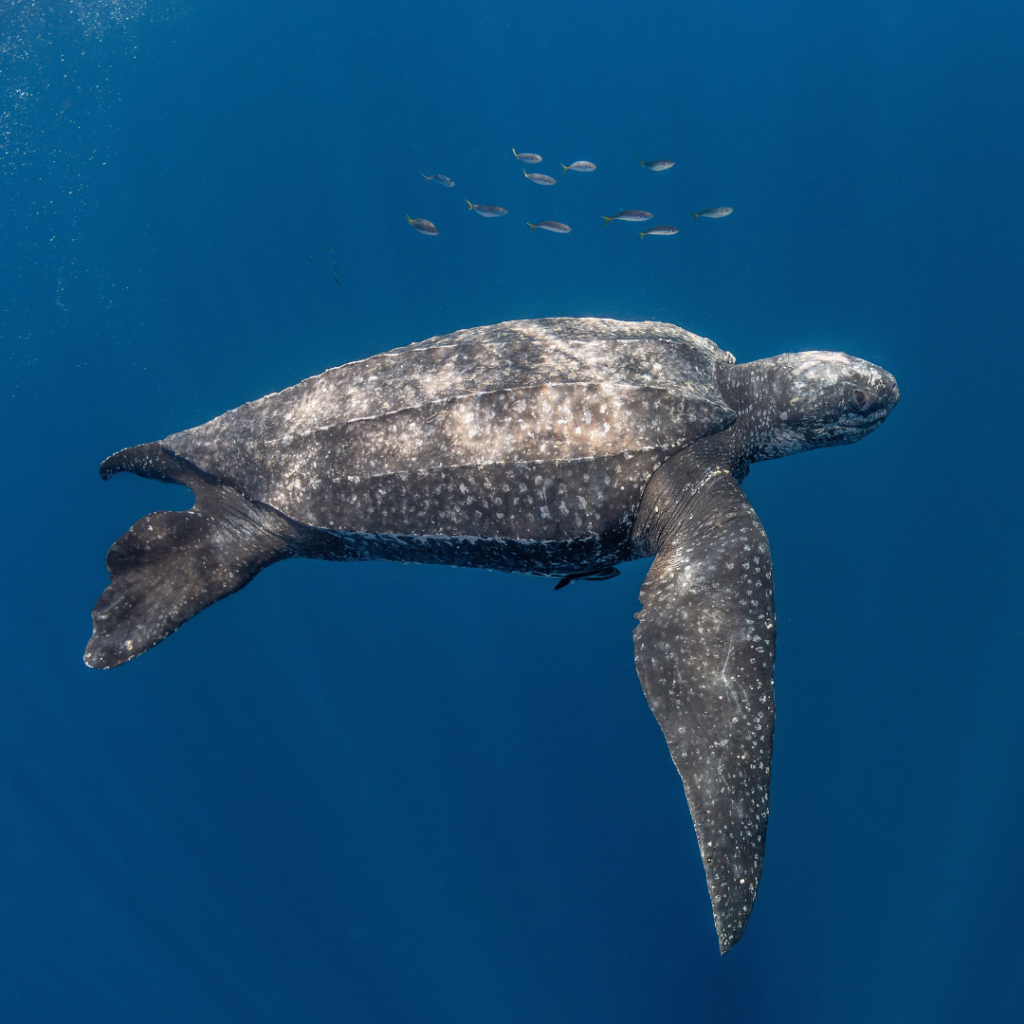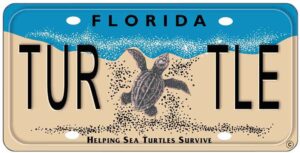Sea Turtle Nesting Season is observed from April 1 through October 31.

Sea Turtles are protected by the US Endangered Species Act of 1973 and Florida Statute Chapter 370. It is illegal to harm or harass sea turtles, their nests, or hatchlings. The City of Miami Beach is a nesting habitat for three species of protected sea turtles; the Loggerhead, Green, and Leatherback.
Sea turtle nesting season in the State of Florida occurs between May 1 and October 31. However, turtle nesting season begins on April 1 for Miami Beach to account for the earlier leatherback nesting season.
Although turtles prefer dark beaches, many nest on lighted shores due to the lack of dark beaches. This jeopardizes hatchlings, which are instinctively attracted to bright lights. The City of Miami Beach has adopted a Turtle Nesting Protection Ordinance to minimize the impact of artificial lighting on hatchlings and nesting sea turtles and thereby protect the endangered species that frequently visit its beaches. The Ordinance requires light management on private and public lands to prevent light pollution that is problematic for sea turtles and other nocturnal animals.
Sea turtles naturally prefer dark beaches to nest on, but often resort to nesting on lighted shores due to the lack of dark beaches. They distinguish between land and water primarily through the stark contrast between the darker dunes and the brighter sea. Artificial lighting near beaches presents a significant hazard as it confuses the hatchlings, leading them to mistakenly crawl toward the artificial lights, instead of the ocean.
Beachfront artificial lighting poses a serious threat by disorienting the hatchlings, causing them to crawl away from the ocean and toward the artificial light. To minimize this impact on hatchlings and nesting turtles, the City of Miami Beach has adopted the Turtle Nesting Protection Ordinance requiring light management on private and public lands to prevent light pollution that is problematic for sea turtles and other nocturnal animals.
On October 30, 2024, the Miami Beach City Commission updated the city’s 18-year-old Turtle Nesting Protection Ordinance to include lights visible from the beach, integrating interior lighting standards for hotels and commercial properties as well as limiting fireworks to barges that affect the more than 7 miles of beachfront.
To minimize disturbance to sea turtles and their nests, the reduction of artificial light sources from properties that may be visible from the beach is required. Light pollution from adjacent properties disorients nesting adults and hatchlings because sea turtles mistake artificial lighting for the reflection of the night sky on the water. Although there is no substitute for a naturally dark sky, there are practices that our community can follow to improve the nesting conditions for marine turtles that lay their eggs every year on our beaches.
Properties can comply with the ordinance by turning off all unnecessary lighting or keeping the blinds closed at night. We also recommend the installation of tinted glass or shades on all windows and glass doors facing or within line of sight from the beach. Any light fixtures located on the exterior of the property can also be modified or replaced to decrease disorientation and improve nesting habits through the installation of indirect low-profile lighting fixtures and bulbs. Existing fixtures can also be shielded or repositioned so that the point source of the light or any reflective surface is no longer visible from the beach. To obtain more information on sea turtle lighting please visit: http://www.myfwc.com/
Beachfront artificial lighting poses a serious threat by disorienting the hatchlings, causing them to crawl away from the ocean and toward the artificial light. There are ways that beach front property owners can modify their lights to prevent them from being seen from the beach. Multiple solutions may need to be used to prevent sea turtle disorientation.
- Keep it Low: Keep outdoor lighting as low as possible to the ground for the needed purpose.
- Keep it Long: Select lamps/bulbs that produce only long wavelength light (560 nm or greater, which is amber, orange, or red). The best technology available for sea turtle-friendly lighting is a Red or Amber LED.
- Keep it Shielded Materials such as aluminum flashing can be used as a shield to direct light and keep it off the beach. When shielding lights, it is important to make sure they are shielded from all areas on the beach (including from either side and on top), and not just from the beach directly in front of the light. Black oven paint may be used as a temporary solution. Light sockets with an exposed light source (such as plain bulbs) should be replaced with fixtures that are specially made to recess and/or the light source should be shielded.
- Turn Off Unnecessary Lights: Don’t use decorative lighting such as runner lights or up-lighting on vegetation in areas that are visible from the beach. Permanently remove, disable, or turn off fixtures that cannot be modified.
- Choose Turtle-Friendly Fixtures: Replace incandescent, fluorescent, and high-intensity lighting with the lowest wattage/ lumens necessary for the needed purpose.
- Reposition Lights: For lights that can be repositioned, face them away from the beach so that the light source is no longer visible.
- Install Directional Lighting: Replace fixtures that scatter light in all directions (such as globe lights or carriage lights) with directional fixtures that point down and away from the beach.
- Create Natural Barriers: Plant or improve vegetation buffers such as sea grapes and other native beach vegetation between the light source and the beach to prevent light from shining toward the beach.
- Use Motion Detector Lights: Use shielded motion detector lights for lighting and set them on the shortest time setting.
- Manage Indoor Lighting: To reduce spillover from indoor lighting, move light fixtures away from windows, apply window tint to your windows with a 45% inside to outside transmittance standards for tinted glass, or use window treatments like blinds or curtains, to shield interior lights from the beach.
The following links provide some additional information on sea turtle friendly lighting from the Florida Fish and Wildlife Conservation Commission (FWC) and the Sea Turtle Conservancy.
Sea Turtles and Lights | FWC (myfwc.com)
Finally, we encourage you to reach out to FWC at Wildlifelighting@MyFWC.com as they have experts on sea turtle friendly lighting and are available to assist property owners with specific details on lighting requirements.
 |
Green Sea TurtleGreen sea turtles are easily recognized by their unique pair of scales in front of the eyes, unlike other sea turtles. They possess a small and blunt head with a serrated jaw. Their shells are oval with varying shades of pale to dark green, with some plain to brilliant yellow, brown and green with striped patterns. Hatchlings emerge as dark olive green or nearly black with a contrasting white underbelly. SIZE: Adults are 3.5 - 4 feet long, weighing between 300 - 400 pounds. NESTING: Preferring warm, sandy beaches for nesting, each female nests 3 - 5 times every other year with an average of 115 eggs per nest. The eggs take about 60 days to incubate. STATUS: Endangered – This species is in danger of extinction, making their conservation crucial. |
 |
Loggerhead Sea TurtleLoggerheads are known for their distinctive large heads with strong, heavy jaws and heart-shaped, ridgeless shells. Their shell color is known to be reddish-brown with a yellowish-brown underbelly. Hatchlings are typically dark brown with a pale brown border on their flippers. SIZE: Adults are 2.5 - 3.5 feet in length, weighing up to 350 pounds. NESTING: Loggerheads are the most common nesting species in Florida. Each female nests 5 to 7 times every 2-3 years, laying an average of 80-120 eggs per nest. The eggs take about 55 days to incubate. STATUS: Threatened: This species is likely to become in danger of extinction within the foreseeable future. |
 |
Leatherback Sea TurtleAs giants among turtles, Leatherbacks are extraordinary. They are the only sea turtles without a bony outer shell. Adults are primarily black with a pinkish-white mottled laterally ridged shell and have a pale white and pink spotting on the head. The hatchlings are about 3-4 inches in length have white striping along their backs SIZE: Adults reach an impressive 6- 6.5 feet in length and weigh about 1500-2000 pounds, roughly equivalent to a small car. NESTING: Each female nests multiple times during a season and lays an average of 80-100 eggs in each nest. Eggs incubate in about 70 days. STATUS: Endangered – This species is in danger of extinction, making their conservation crucial. |
Sea Turtles are protected by the US Endangered Species Act of 1973 and Florida Statute Chapter 370. It is illegal to harm or harass sea turtles, their nests, or hatchlings.
Miami Beach is a crucial nesting habitat for the Loggerhead, Green, and Leatherback sea turtles. These three species visit the shores of Miami Beach annually starting around April and extending through early November, laying around 100 eggs in a nest and between 3 to 7 nests during the summer nesting season.
It is important not to disturb hatchlings, eggs, or nests since hatchlings need to crawl to the sea unimpeded. Touching nesting females, taking flash pictures of nesting females or hatchlings, or digging into nests is prohibited by law. If you observe someone harassing a nesting or hatchling sea turtle, contact Florida Fish and Wildlife Conservation Commission (FWCC) Law Enforcement at (888) 404-FWCC (3922) or *FWC on cellular phones.

The Flip the Switch campaign was funded in part by a grant awarded from the Sea Turtle Grants Program. The Sea Turtle Grants Program is funded from proceeds from the sale of the Florida Sea Turtle License Plate. Learn more at www.helpingseaturtles.org

- What threats do sea turtles face? In the wild, sea turtles are susceptible to predation, disease, and even beach erosion. In urban environments, such as Miami Beach, they can run into issues with fishing gear, beach furniture, vehicles, people, and the biggest challenge of all, light pollution.Sea turtle hatchlings are born with the instinct to head toward the brightest light on the beach after hatching, which is usually the light of the moon in the sky reflected off the ocean surf. In coastal areas with artificial lighting, hatchlings may become disoriented and travel in the wrong direction away from the ocean, potentially never making it to the water. It is estimated that only 1 in every 1,000 hatchlings is able to reach adulthood.
- What is the sea turtle life cycle? Nesting females crawl onto the beach at night and lay their eggs in the sand to kick-start a new generation of marine turtles. Depending on the species, these eggs generally incubate for about 60-90 days before they finally hatch. At the end of their incubation period, the hatchlings emerge from their nests, push their way to the surface, and immediately enter a frenzied race to reach the water. Once in the ocean, sea turtles can take anywhere between 10-50 years to reach adulthood and will nest in 2 to 4-year intervals to keep the life cycle going.
- Which government entities are involved in sea turtle conservation? At the state level, the Florida Fish and Wildlife Conservation Commission (FWC) is responsible for ensuring compliance with Florida Statutes. They also enforce turtle conservation permits, respond to and investigate incidents, and make changes to the permits and requirements.At the next level of regulation is the Miami-Dade County Parks, Recreation & Open Spaces Department – Sea Turtle Conservation Program, which holds the state permit and oversees daily surveys of nests. Their responsibilities include evaluating hatch success, nest relocation, and responding to disorientations. If you ever encounter a stranded sea turtle, you can contact their 24/7 Sea Turtle Hotline at (305) 310-3046 for directions from authorized personnel.The City of Miami Beach helps connect all the entities involved by making recommendations to the state and county, ensuring compliance with the Sea Turtle Protection Ordinance, and overseeing the educational component of the program. It’s important to note that the city is not allowed to change regulations, issue permits or handle sea turtles and their nests.
- What is the city doing? The City is working on short- and long-term strategies to reduce potential disorientation using the reports from Code Compliance inspections, as well as the nest and disorientation data collected by Miami-Dade County and Florida Fish and Wildlife Conservation Commission (FWC). The Environment and Sustainability Department regularly analyzes the data to help other city departments prioritize lighting retrofit and enforcement efforts where they will have the greatest impact. The Environment and Sustainability Department also provides general communications and community outreach to educate the community on the sea turtle nesting season.
- How can I be involved? As a resident or visitor, you can be an advocate for sea turtles. Advocates can report what they see and educate friends and neighbors to stay clear of nests. It is important to remember that advocates cannot touch nests, hatchlings or sea turtles.There are many other practices that you can follow to improve the nesting conditions for the marine turtles that lay their eggs every year on our beaches. Sea turtle hatchlings orient themselves toward the ocean by the reflection of the moon on the water, so excessive artificial lighting can disorient and prevent them from reaching the ocean. Although there is no substitute for a naturally dark sky, properly managing artificial lighting in beachfront properties is an important measure for reducing disorientations.
- How can I be a part of a hatchling release? Miami-Dade County hosts nighttime sea turtle releases through their Sea Turtle Conservation program. Learn more at Miami-Dade County Sea Turtle Conservation Program.
- Never approach turtles emerging from the sea or disturb or harass nesting turtles. No matter how quiet, humans will often (and unknowingly) frighten nesting sea turtles back into the sea.
- Touching nesting females, taking flash pictures of nesting females or hatchlings, or digging into nests is prohibited by law. If you observe someone harassing a nesting or hatchling sea turtle, contact Florida Fish and Wildlife Conservation Commission (FWCC) Law Enforcement at (888) 404-FWCC (3922) or *FWC on cellular phones.
- Use caution while boating to avoid collision with turtles.
- Stay clear of marked sea turtle nests on the beach. All nests are marked by stakes and caution tape, and labeled with an FWC-approved sign. This includes “camping” near a nest waiting for hatchling to emerge.
- Spread the word! Tell your friends and neighbors that sea turtle season is here and their survival depends on everyone in the community.
- Miami Beach Sea Turtle Species
- City of Miami Beach Marine Turtle Protection Ordinance
- Florida Sea Turtle License Plate
- Florida Fish and Wildlife Research Institute
- FWC Sea Turtle Lighting
- Miami-Dade County Turtles
- Ben Hicks Fine Art
- Sea Turtle Informational Flyers for Hotels, Resorts and Apartment Buildings
-